::..:::…..:..::….:::::..:::..:::::::……:::…::.:::….::::..:..:::…::…….:::::

IGLOO: Well, hello there! I must say I am glad you have joined the larger electronic music table but am anxious to ask you a few questions –but first, where exactly are you located and can you talk about your regional surroundings a bit and why it might be a ripe place for such musical experimentation?
Jens Rößger / Binemusic: Binemusic has its headquarters in Essen in the Ruhr area, between Duesseldorf and Cologne. Actually this decision was based on private interest rather than an artistic or economical point of view.
IGLOO: That’s understandable, but what, in any way, makes Essen an area that contributes in some way to your resulting production? Is it its (rural) environment or distance from other creative capitals that makes it a fit?
Thomas Touzimsky / Binemusic: It’s a certain kind of freedom. Residing in Essen does not directly link you to any special genre as much as Cologne would, still being one of Germany’s capitals of techno music. On the other hand you still preserve a certain proximity to it geographically as well as musically.
IGLOO: What exactly is Binemusic’s relationship with Raster-Noton? I see you have artists whom have recorded as part of their roster (Tol, Olaf Bender). Are these side projects for them as solo artists? Where did you get the name for the label?
JR: We owe a lot to both Raster-Noton and especially Olaf Bender. It all started out in 2001 when we set up a website about the – somewhat East Germany underground – band Ag Geige, of which Frank Bretschneider, Olaf Bender and Jan Kummer were all members between 1985 and 1992. That pretty much gave the impulse to eventually found the label Binemusic. Its name goes back to my wife Sabine who is doing the office work as well.
IGLOO: Thomas, as co-founder, you have also released a CD on the new label. What is your sound all about? Can talk a bit about your creative outlets by explaining your process a bit? Jens – do you make music yourself?
TT: ‘Fold’ is pretty much a summary of things that influenced me during the last three years and ranges from precise and sterile click tracks over ambient to electronic weirdness. It kind of evolves from strictly rhythmic patterns to a rich sound around the end.
JR: No, I am not a musician myself. Our label policy includes strong cooperation with our artists. Corporate ideas will be processed and turned into an overall concept.
IGLOO: How does it feel being both a musician and a promoter? Does it ever feel like a conflict of interest or do you feel it is a good way to enrich the creative process?
TT: As a promoter, you listen to things differently. With a deeper insight in the whole process of creating your own music, it is a lot easier to decide whether or not you are listening to something really interesting. Of course sometimes Jens has to retard me if my own music gets a bit too offbeat for the label, but I solve this in working on other projects alongside, so the music for the label itself remains its tight sound.
IGLOO: Binemusic seems to be releasing limited editions of 500 copies of each release. Can you talk about why you release in such limited quantities? Is the audience small or do you like the exclusivity of smaller runs? I know cost is always a factor, from printing to shipping, etc. How do you manage to establish and keep a new label afloat? Do you two have other day jobs that make this all possible?
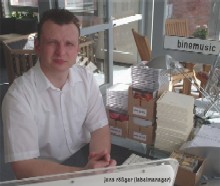
JR: On one hand we want to keep some sort of exclusivity of course, while on the other hand costs must be kept in mind as well to prevent harming the label’s economy. We both have normal day jobs alongside the label what gives us a certain amount of financial freedom here.
I am working as despondent for a huge service company in Essen. There isn’t too much room for creativity, so my work for the label is a perfect compensation.
TT: I got one of those typical 9-5 office jobs. Personal disposition, correspondence, invoice processing – I guess you might call me a management assistant. That sounds worse than it actually is, but I really enjoy this. And it gives me the opportunity to concentrate on other things after work.
IGLOO: Talk about the state of digital music in 2004 a bit. Do you feel we have come a long way since John Cage and Stockhausen, since Kraftwerk and Brian Eno, since Gary Numan and Laurie Anderson, since Woob and Biosphere? Where exactly are we on the map of electronic music at the moment in your opinion?
TT: Especially since Cage and Stockhausen electronic music has evolved from being experimental – and sometimes surreal and hardly tangible – to its current state shy of everyday entertainment. Kraftwerk and Eno undoubtedly had a huge influence on this process. One of the big advantages of this special kind of music has always been the lack of fixed rules. Nowadays artists like Richard D. James and Autechre help to further diversify this sound, giving it back some kind of avant-garde.
IGLOO: Yes, I agree about their enormous contributions but with a handful of labels that produce (or have produced) high quality microsound and other forms of minimal electronics (like Meme, Trente Oiseaux, Ash International, Raster-Noton, Touch, Mille Plateaux, Caipirinha, Plate Lunch, Mego, Spekk, and many others) where do you fit in and/or challenge this incredibly alive roster of labels? To me there doesn’t seem to be a sense of competition, in fact, to the contrary, there seems more of a camaraderie between like and shared artists. How does this attitude of non-exclusivity pay off for the label, for the artist, for the audience?
JR: We don’t stick to a strict musical concept nor do we release special series. Artists like Olaf Bender whose musical activities may not fit into their own label concepts are given the opportunity to present themselves outside their usual ground. Of course we attach importance to the exclusivity of the musical productions – most times we decide according to instinct. Our cooperation with Raster-Noton is a good demonstration of the lack of hostile competition. Eventually the audience gets rewarded with various releases on different labels, reaping the full creative potential of the respective artists.
IGLOO: Well put, in fact, sometimes you will hear a warmer side of someone’s ideas – or even something more mainstream based on aesthetic choice and overall broad-based experimentation. Can you tell me how that process develops? Do you approach the artist if you are aware of their “other” output or does the artist know that is your intention and mission so they come to you as a place that will want to foster their further exploration outside of their “known sound”?
JR: We directly approach the artists ourselves, already with a certain concept in mind. Olaf Bender for example wanted to live up his old work with Jan Kummer (AG Geige). With Tilo Seidel it was due to the fact that he hadn’t released anything for quite a long time. Taylor Deupree’s work I always liked, especially his rhythmic tracks, so we just asked him if he would be interested in doing something in this direction. Of course we receive a lot of demos as well – one of them being by Benjamin Brunn (WARE) in which we immediately recognized a certain talent.
IGLOO: Why a record label and not a nightclub or a shop?
TT: We are still a bit limited due to our daytime jobs. In an early stage Binemusic used to be a shop as well, although concentrating on certain artists rather than styles. Of course we might reconsider the nightclub idea as soon as we can make a living from the label.
IGLOO: In the past few years I have seen some incredibly remarkable live electronic shows that have blown my socks off – Kid 606 @ MassArt in Boston, Nobukazu Takemura @ the Middle East Club in Cambridge, Jamie Liddell @ Sonar ’03, Dumb Type at the Portland Center for the Performing Arts, Funkstorung @ Portland’s Holocene, Pansonic, Tennis, Ladytron etc, and the list goes on. To you – who are the most daring electronic artists out there these days both live and on recording? Who are the emerging artists to watch for?
TT: Unfortunately I haven’t seen too many unique live performances. Minimal and experimental music sometimes limits the artists in standing behind their desks rather then playing with the audience. Of course things get easier if you are in a band. Wire are a good example here. Moving into more dance-oriented music allows you to get the listeners into a different mood, like Underworld or The Prodigy. Besides the two artists I named before – Richard D. James/Aphex Twin and Autechre – you should have an eye on Russia and Asia. I have heard some really great tracks coming from there over the last twelve months.
IGLOO: Oh, I certainly have been watching Alexei Borisov, Chefkirk, Tujiko Nuriko, and continue to watch KK Null for instance. I know that Nao Sugimoto over at Plop plans on sharing the wealth with the rest of the globe – which helps break down distribution barriers to otherwise unheard sounds – so I think this is a coming of age for all of us in Europe and in the US.
When forming visuals I noted that repetitive shapes and saturated colors don the cover art for your releases thusfar. Can you talk a bit about the overall idea for packaging and art design? What are your intentions and who creates the overall look for the label?
JR: As I said before, we look for a strong cooperation between label and artist. We don’t release series, so every single release stands on its own and represents one product. The artists are requested to take part in the creation of the artwork; the font setting is all that is fixed. Every musician has to completely identify himself with the product – that’s our aim, and we think Binemusic is the ideal platform for this.
IGLOO: In a classic sense, do you think your listening audience has projected expectations of a label? Many labels design their overall sound aesthetic to appeal to a limited audience. Do you feel this somehow applies to Binemusic and could you share any examples of how this transfer or dialogue takes place?
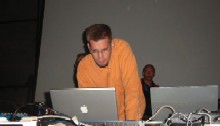
TT: That depends on the age of the label and the status it earned in the past. Take Warp Records for example – listeners have fixed expectations when buying one of their records. I doubt they could release a plain 4/4 house record without causing a stir among their regular customers. Of course the audience helps defining a label’s sound as well through both their personal feedback – forums, message boards, etc. – and the releases they buy. Most of the smaller shops already sort their assortment by label as well. Binemusic isn’t too fixed on a single musical style yet, so it doesn’t apply here, but I am sure this will change in the future.
IGLOO: Yes, I can say without flinching that I have been known to drop into say Other Music (New York), Jackpot Records (Portland), Sister Ray (London) or even Twisted Village (Cambridge) and have the experience of going for a particular, honed in, sorta label or sub-sub category to locate “exactly” what I crave. So an overall label sound or essence can evolve with time. It’s been great to have the opportunity to chat with you a bit – any final thoughts to share – and what can we expect (live, releases, other) from Binemusic in the future?
JR: 2004 will see releases by Èonta, two multimedia artists from Germany, Taylor Deupree (12K) and Benjamin Brunn who already released several great tracks on Schaffhäuser’s Ware label. Furthermore a new Tilo “TOL” Seidel will come out on 12″ as well as another 12″ featuring Benjamin Brunn and Èonta, while 2005 will bring two albums by Thomas Touzimsky and Frank Bretschneider. And of course we are already scheduled for another live performance @ Essen Elektronisch in late 2004.
::..:::…..:..::….:::::..:::..:::::::……:::…::.:::….::::..:..:::…::…….:::::
>>KEY
::..:::…..:..::….:::::..:::..:::::::……:::…::.:::….::::..:..:::…::…….::::
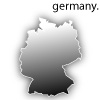
::..:::…..:..::….:::::..:::..:::::::……:::…::.:::….::::..:..:::…::…….::::
::..:::…..:..::….:::::..:::..:::::::……:::…::.:::….::::..:..:::…::…….::::
::..:::…..:..::….:::::..:::..:::::::……:::…::.:::….::::..:..:::…::…….::::
::..:::…..:..::….:::::..:::..:::::::……:::…::.:::….::::..:..:::…::…….::::






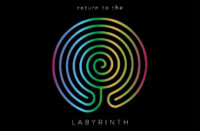




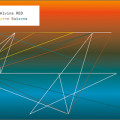


![Pole :: Tempus Remixes (Mute) — [concise]](https://igloomag.com/wp/wp-content/uploads/2025/04/pole-tempus-remixes_feat-75x75.jpg)






![Hasbeen :: Bunker Symphonies II (Clean Error) — [concise]](https://igloomag.com/wp/wp-content/uploads/2025/04/hasbeen-bunker-symphonies-ii_feat-75x75.jpg)

